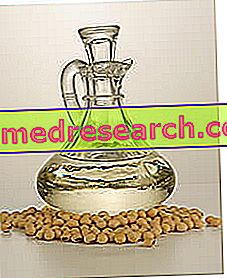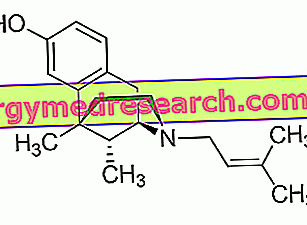From Seeds to Soy Oil
Soybean oil is extracted from the seeds of the homonymous plant , which contain it in an amount equal to 15-25% of the dry weight, in relation to the variety considered, the cultivation techniques and the seasonal variability.

Nutritional Properties
Soybean oil is very rich in polyunsaturated fatty acids ; in particular, the content in linoleic acid (precursor of the omega-six series, 58% ca) and alpha-linolenic acid (precursor of the omega-three series, 4-10%) stands out. Good also the content of oleic acid (19-30%), while compared to other vegetable oils there is a clear lack of vitamin E. This characteristic, together with the abundant presence of polyunsaturated fats, makes soybean oil particularly subject to oxidative processes, with a consequent tendency to premature rancidity of the product. To limit this phenomenon, many producers operate a partial hydrogenation of the product, the same one that - when performed in a more intense way - allows the conversion of soy oil into margarine. Unfortunately, all these industrial processes end up depleting the precious nutritional virtues of crude soybean oil, now only available in health food stores.
Like all vegetable oils, soybean oil also contains a small proportion of saturated fats, in particular stearic acid (4% ca) and palmitic acid (10% ca).
The qualitative-quantitative composition in fatty acids, as well as the examination of production processes, allows us to formulate a judgment with light and shade. The omega-three content is in fact fair, fats found only in traces in most seed oils; this characteristic, together with the richness in omega-six and oleic acid, gives soy oil interesting cholesterol-lowering properties. This effect, which can be attributed a little to all vegetable oils, is however valid only when the oil is used with sobriety (to avoid introducing too many calories and gaining weight) and in partial substitution (not in addition) to animal fats. Furthermore, it is important that the diet contains at the same time important sources of omega-three, such as fish and its oil, to balance the relationship between these nutrients and the omega-six. In the raw soybean oil there are also discrete amounts of lecithin, which also has cholesterol-lowering properties and is potentially useful in the presence of neurological diseases due to its ability to promote the regeneration of myelin sheaths. G
negative judations can instead be expressed on the low content of vitamin E, very important to limit the peroxidation phenomena to which polyunsaturated fatty acids (PUFA) are subjected. As anticipated, this characteristic is also responsible for the rancidity of the product, and can be corrected through the partial hydrogenation of the oil; unfortunately, it is however known that the hydrogenation processes lead to the formation of trans fatty acids, which at high dosages have a negative effect on the levels of plasma cholesterol (they raise the bad one and reduce the HDL fraction). In recent years this "problem" of richness in highly oxidizable alpha linolenic acid has been bypassed at the origin through genetic engineering, which has led to the selection of very low content of soya in alpha linolenic acid. Such ùidoneo for frying, since this use should be reserved only for fats rich in oleic acid, such as olive, peanut, avocado and some sunflower varieties. In contrast, traditional soybean oil should therefore only be used raw.
Ultimately, there are no particular reasons to prefer refined soybean oil, which we normally find on supermarket shelves, to other seed oils, much less to the finest olive oil. The matter changes for virgin and "raw" products (in reality a rectification is always necessary), cold-pressed and available in specialized shops; these soy oils are in fact particularly rich in precious nutrients for the health of the organism. The ideal, however, is often to rotate the type of oil used in the kitchen, since each vegetable source has its own peculiarities.
A final note should be made on the use of soybean oil in the chemical industry, for the preparation of paints, lubricants, adhesives, resins, plastics, etc.



